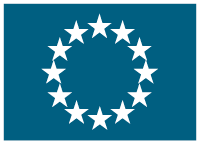Natura 2000 sites in the Piatra Craiului National Park
(Piatra Craiului II)
Start date: Jul 1, 2003,
End date: Jul 1, 2007
PROJECT
FINISHED
Background
The Piatra Craiului National Park is an important natural area in the Carpathians that harbours a rich diversity of habitats and species. The area is subject to pressure mainly from grazing and tourist activities and the conservation management of the site has only been recently introduced. A management plan was drawn up and a park administration was set up with funding from international sources.
Some important conservation measures, however, should be implemented in the sites that host the most valuable and threatened habitat types and species. This is the case, for instance, of some bat communities that live in the numerous caves in the area. The tourist pressure is putting them at risk and is also causing erosion and the degradation of habitat types of community interest in the rocky slopes. Other plant species, like the plant Ligularia sibirica and the longicorn insect Rosalia alpina, also require conservation efforts in order to prevent their disappearance from the last spots where they survive.
Objectives
The project aimed to improve the conservation status of habitats and species of community interest in Piatra Craiului National Park through a series of strategic interventions in the five selected sites. The planned actions consisted of: inventories and mapping of the targeted habitats and species; design of monitoring plans; preparation of a detailed management plan for each site and integration into the general management plan for the National Park. Land lease and fencing in the area hosting the population of Ligularia sibirica was also envisaged, as well as closing caves and climbing trails to avoid disturbance to bat colonies and the degradation of natural habitats.
The public awareness activities would include the production of dissemination materials, films and pictures, activities with the mass media, website publishing and information panels and displays throughout the sites and in the parkâs visitor centres and information points.
Results
The project achieved its objectives by performing inventories, mapping the targeted habitats and species and drawing up monitoring plans. Another important success of the project was the declaration of the entire park area as a Natura 2000 site and drawing up of a management plan, initially being foreseen for only five separate smaller sites. The recovery and increase in the Ligularia sibirica population in Brusturetului Gorges site was another major success. This was achieved by fencing off the area and restoring the water regime. Though it was not possible to lease the whole foreseen area, its population increased from 244 individuals in 2004 to over 670 individuals in 2007.
Practical measures included the closing of several caves and climbing trails to avoid disturbance to bat colonies and the degradation of natural habitats. Public awareness was raised within local communities and tourists regarding the protection of the bird species, hayfields, riparian galleries, water ecosystems and Natura 2000 network. The delay in the Global Environmental Facility funded project, which aimed to construct two visitor centres by July 2004, adversely affected the project implementation. Just one visitor centre was constructed and that after the project end in August 2007.
In several cases the public infrastructure (panels, tables, bar works) was destroyed by vandalism and the beneficiary was forced to replace them. Financial difficulties also delayed the installation of the tourist trail and light system in Dambovicioara cave. It was expected to be completed several months after the project end.
The park administration will continue to apply and update the measures and regulations stipulated in the management plan as well as enforce them in the field. The maintenance and service of the containers from the Dambovicioara has been already assigned to the Dambovicioara Commune Hall. It will also maintain the infrastructure of the Dambovicioara cave. The works in the field (bird watching towers, Ligularia fence and irrigation system, panels, bar works of the closed caves, climbing trails and gears) will be maintained and renewed by the park administration. Important attention will be paid to the public awareness activities, which will continue (especially within the visitor centre), providing the public support for the conservation activities and raising the visitorsâ awareness of the Natura 2000 network importance.
The designation of the national park as a Natura 2000 site will increase future opportunities of attracting new funding sources that â collated with the annual park budget â will contribute to the financial sustainability of the project continuation.


